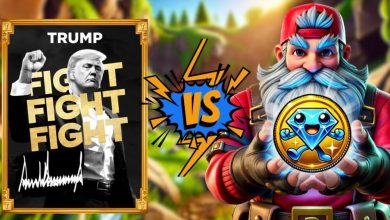Player Acquisition Tactics Every Game Developer Should Know

You pour blood, sweat, and tears into making an amazing game. Hundreds or even thousands of hours were spent perfecting gameplay mechanics, creating great visuals, and fine-tuning the player experience. If you’ve ever gotten to that stage as a game developer, you have probably made the common mistake of sitting back and thinking that the hard work is over. Now you can just sit back and watch the player numbers grow organically as everyone discovers your game, right?
Unfortunately, that’s not the reality for 99% of games. The harsh truth? Creating a great game is only half the battle. Even the most brilliant titles can fade into obscurity without building and executing player acquisition strategies. As competition intensifies across PC, console, and mobile platforms, you need proven tactics to attract players and convince them to play out of the hundreds of thousands of other titles out there.
Community Building Before Launch
One of the best things you can do for your player base is to start building your community long before your game hits the market. Create Discord channels, subreddits, and social media accounts dedicated to your upcoming game. You can share development updates and behind-the-scenes content on these platforms and ask for feedback on specific elements. It may be prolonged at first, but think of this as the kindling you need to start the fire.
When done well, this approach works wonders because you create early advocates who feel invested in your game’s success. You also get easy access to valuable feedback channels during development and have a ready audience when launch day arrives.
Strategic Use of Game Press Release Distribution
Gamers often go to gaming blogs and magazines to stay up to date on what’s going on across the industry. Some leading sites get thousands of visitors per day, and depending on your game, these could all be potential new players you could acquire.
But you may wonder how you can get published on sites like this if you don’t have the network or any gaming public relations experience. The answer? You can use a gaming press release distribution service to automate the process and get featured on the homepage of many of the leading Tier-1 publications in the gaming sector.
A single feature on these sites can introduce your game to millions of potential players and drive home massive awareness for your brand in general. If you are going to go this route, one thing to remember is that you need to make your new stand out.
Share your unique story. Go in-depth with what makes this game unique. Tell players what they can expect to experience. The overall takeaway is that instead of focusing on features when doing gaming PR, focus on what makes your game different.
Cross-Promotion with Similar Games
This might sound counterintuitive, but partnering with games that share your target audience can be a surprisingly effective tool for ramping up your user base. This doesn’t mean you will promote direct competitors but games that appeal to similar players. Here are a few ideas and examples:
- If you’ve created a roguelike dungeon crawler, you could cross-promote with a deck-building game
- Host joint tournaments or events that bring both player bases together
- Develop shared narrative elements that connect your game worlds.
- Share marketing data and insights to refine targeting for both studios
Fall Guys and Among Us did this brilliantly, cross-promoting with cosmetic items that benefited both games.
Limited-Time Events and Giveaways
FOMO (fear of missing out) is a powerful motivator, and it’s used in practically every industry in order to create urgency and drive people to make impulse purchases. You know those websites that say, “Only on sale for the next 30 minutes,” and then have a countdown timer? Yep, that’s a classic example of FOMO marketing.
While your marketing approach doesn’t have to be relatively so crude and obvious, it is still a good idea to create special in-game events or giveaways that run for a limited time to drive player acquisition spikes.
Some useful approaches include free weekend play periods on Steam or consoles and special seasonal events with unique rewards. Once again, you could use this as an opportunity to collaborate with other entertainment brands or run Twitch drop campaigns during streamer events. Epic Games Store’s weekly free game giveaway perfectly demonstrates this concept, driving massive user acquisition through time-limited offers.
Influencer Partnerships
Gaming influencers such as streamers, YouTubers, and even key community members, can help introduce your title to a massive audience of engaged players. As such, almost every large gaming title now uses this approach by giving top streamers early access to their games so they can display it to their user base (many times these streamers are forbidden from speaking negatively about the game as well).
Even if you’re developing a micro-indie title, you can still appeal to streamers and get them to play – the key is to find the right partners who genuinely connect with your game type.
Outside of paying them directly, you’ll need to find ways to draw them into playing your game and agreeing to give you coverage. This could be by creating custom in-game content or challenges specifically for these creators. You could also sponsor dedicated streams or one-off videos rather than just quick mentions.
Final Word
Driving new players to your game isn’t just a one-and-done deal. IT’s an ongoing process that requires constant refinement and strategy adjustment. That’s why the most successful developers often treat acquisition as a core part of game development itself, not an afterthought.
Suppose you can combine all of these tactics we’ve mentioned in this blog into a wide-ranging strategy tailored to your specific game and target audience. In that case, you’ll be well on your way to building a healthy player base that can grow through word-of-mouth and community expansion.
Just remember that authenticity matters most. Players can sense when acquisition tactics feel manipulative rather than genuinely inviting. The goal should be to connect real players with a game they would genuinely enjoy playing.





